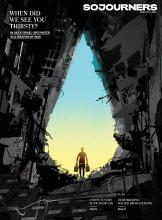Mar 5, 2021
Where the particularly eclectic Venn diagram of true crime enthusiasm and religious history nerdery overlap, you’ll find your binge-worthy streaming recommendation for the weekend: Netflix’s compelling new limited series, Murder Among the Mormons.
Read the Full Article

Already a subscriber? Login
